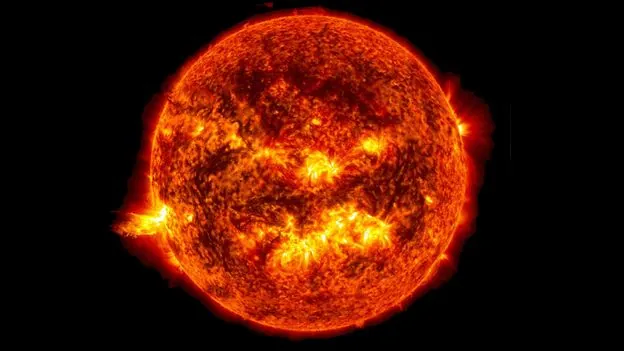
Did Our Sun Once Have a Twin? Unraveling the Mystery of Its Lost Companion
2024-12-26
Author: Chun
Could it be that our beloved Sun once shared the cosmos with a twin star? While most stars in our galaxy exist in pairs, our solitary Sun stands out as an anomaly. With recent scientific findings pointing toward a possible stellar sibling, the question arises: what happened to our Sun's potential companion?
Currently, the Sun orbits through one of the spiral arms of the Milky Way, embarking on a journey around the galaxy every 230 million years—all alone. For context, the nearest star, Proxima Centauri, lies a staggering 4.2 light-years away, making our Sun seem even more isolated when you consider that the fastest spacecraft we've built would still take over 7,000 years to reach it.
Astronomers have long noted the commonality of binary stars—two stars gravitationally bound and orbiting each other. In a striking discovery, pairs of stars have even been spotted near the supermassive black hole at the heart of our galaxy, challenging previous beliefs about the destructive gravitational influence of such an environment. The prevalence of binary systems raises an intriguing question: was our Sun born alongside a fated companion that drifted away over cosmic time?
Gongjie Li, an astronomer from the Georgia Institute of Technology, notes, "It's definitely a possibility—but if the Sun did have a companion, its loss may have spared Earth some tumultuous gravitational disturbances that could have made our planet inhospitable." If a twin star had been present, the gravitational pull could have affected Earth’s orbit, leading to extreme climatic shifts.
Past theories about a hypothetical second star, often dubbed "Nemesis," have lost credibility after numerous surveys failed to detect any such body nearby. However, early in the Sun's life—around 4.6 billion years ago—it may have experienced quite a different environment than we observe today.
Our Sun was born from a vast nebula—a cloud of gas and dust collapsing under gravity. Scientists like Sarah Sadavoy from Queen's University have explored the "fragmentation process," through which these clouds might spawn multiple stars. Her research indicates that many stars are likely formed in pairs, suggesting the Sun could have originally been one half of a binary system.
The potential existence of a lost companion star is further supported by intriguing research findings. Amir Siraj, an astrophysicist at Harvard University, suggests that the Oort Cloud—a vast region of icy comets surrounding our Solar System—may contain remnants or effects of a lost companion. This region is believed to house billions, if not trillions, of objects, and Siraj proposes that a companion star could account for their density.
Interestingly, Konstantin Batygin, who coined the term "Planet Nine" for a theorized planet lurking at the edge of our Solar System, posits that interactions with a binary companion could explain the characteristics of the inner Oort Cloud, highlighting an intricate connection between the Sun's formation and its distant familial ties.
But what about the slight tilt of our Sun—around seven degrees from the plane of the Solar System? Batygin believes this could also be a telltale sign of a companion's gravitational influence during the Sun's formative years.
Despite these compelling clues, finding the Sun's lost twin—or any trace of it—could prove to be a daunting task. Many stars formed in the same region as the Sun share similar compositions, making it difficult to identify any specific stellar sibling. Nevertheless, the possibility of locating similar stars with shared characteristics remains an exciting avenue for research.
A deeper understanding of the Sun's companion—and by extension, the dynamics of exoplanets—could radically shift our perceptions of planetary survival amidst stellar influences. Some exoplanetary systems exist around binaries, creating fascinating astronomical scenarios akin to a two-sun Tatooine.
While the implications are vast and sometimes chaotic, there’s comfort in knowing that the existence of our Solar System likely remained stable despite the Sun's potential twin roaming the stars. With new observational technologies, like the Vera Rubin Observatory set to launch, we may soon uncover more about the Sun’s long-lost counterpart, or at least gather more evidence about the cosmic dynamics of our system.
Could our Sun’s twin be out there, drifting silently among the stars? The answer could lie hidden amongst the cosmic crowd, waiting for an intrepid astronomer to unearth its secrets. The universe is vast, and as Sadavoy puts it, “It could be anywhere.”




 Brasil (PT)
Brasil (PT)
 Canada (EN)
Canada (EN)
 Chile (ES)
Chile (ES)
 España (ES)
España (ES)
 France (FR)
France (FR)
 Hong Kong (EN)
Hong Kong (EN)
 Italia (IT)
Italia (IT)
 日本 (JA)
日本 (JA)
 Magyarország (HU)
Magyarország (HU)
 Norge (NO)
Norge (NO)
 Polska (PL)
Polska (PL)
 Schweiz (DE)
Schweiz (DE)
 Singapore (EN)
Singapore (EN)
 Sverige (SV)
Sverige (SV)
 Suomi (FI)
Suomi (FI)
 Türkiye (TR)
Türkiye (TR)